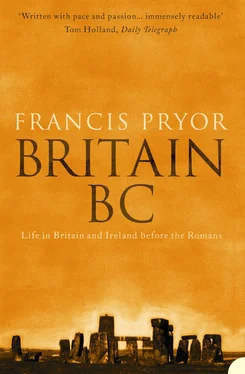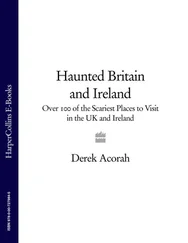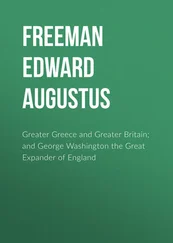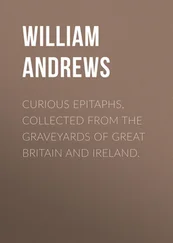1 ...8 9 10 12 13 14 ...28 One should resist the temptation always to put theories and observations on past behaviour into modern terms, but I can’t help thinking that the Neanderthal thought-process may have been similar to the overfocused approach of obsessive trainspotters or stamp collectors. Their hobbies lack interest or appeal for me, because they are devoid of most social context. Don’t get me wrong – I love steam trains, but I’m far more interested in their drivers and firemen and where they would have taken their summer holidays. I have lately observed a certain philatelic tendency creeping into archaeology, both professional and non-professional: an obsession with sites, dates, artefacts and other minutiae – at the expense of the original people and the stories that lay behind them. It’s all very Neanderthal.
It is clear that the Neanderthals ate a great deal of meat, which they undoubtedly hunted effectively, using a variety of techniques and tactics. As we have seen, their bones were robust and thick-walled, which indicates that their lives were extremely active. Dr Paul Pettitt, a notable authority on the subject, put it well: ‘Neanderthals lived fast and died young.’ 12 I don’t want to give the impression that Neanderthals were thugs, because the facts do not support that. Far from it, there is much evidence (mainly from Europe and the Middle East) to suggest that they cared deeply about death and the dead: burials were deliberately placed in dug graves, and bodies were sometimes accompanied by grave goods and red ochre – a natural powder-based mineral paint. Neanderthals took considerable care over the burial of children and older, physically disabled people, who would not have been able to survive outside what must have been a small, robust but nonetheless caring community. Sadly, as we will see shortly, our Neanderthal cousins were to learn that small, caring communities don’t last long when the competition for survival begins to hot up.
The Middle Palaeolithic is the name given to the period dominated by Neanderthal man. As we have noted, Britain was sparsely occupied especially during the earlier years of the period; I know of only one find of Neanderthal-style bones here (teeth and lower jaw fragments from two individuals), from Pontnewydd Cave, in north Wales. I say Neanderthal- style bones because although they have Neanderthal characteristics, their date is very early indeed (around 240,000 years ago), so they are perhaps best seen as coming from people who were ancestral to the true Neanderthals. But Pontnewydd Cave also had another, far subtler, archaeological secret to reveal.
The cave was superbly excavated by Dr Stephen Aldhouse-Green of the National Museum of Wales, in Cardiff. I first met Stephen when he was excavating open-air (i.e. non-cave) sites that were threatened by the construction of the New Town at Milton Keynes, in Buckinghamshire. At that time I was also working on open sites threatened by a New Town, at Peterborough, and we kept in close touch. Stephen’s approach was meticulous: everything was carefully planned and plotted, and his excavations were a model of neatness. When I returned to my own sites, which seemed to spread across acres of eastern England in an organic, amoeba-like sprawl, I envied his neatness and precision. Incidentally, it’s worth noting that archaeology can have different styles and approaches. In that respect it’s like art or design: there’s more than one way to approach a site or a given research objective, and very often the one chosen will reflect the personality and academic outlook of the people, or person, concerned. Stephen has always been meticulous and precise, which is absolutely essential in his line of Palaeolithic research, and was ideally suited to the excavation of the Palaeolithic caves and rock shelters he became interested in when he moved to Wales. 13
He has examined a number of Welsh caves, and has found evidence for the presence of Palaeolithic people in or near them; but so far there is no convincing evidence for large-scale occupation in the manner of, say, Boxgrove. Sadly, Stephen has found no classic Flintstone-style cave dwellings, complete with hearths, floors and surfaces where families actually lived their day-to-day domestic lives. One reason for this might have been that other, rather fiercer animals, such as bears and hyenas, chose the caves for themselves. They were mainly used in the short term, as lookout spots during hunting, or as overnight stopping-off points. Gnawing on prey bones and other telltale signs suggest that at least one site, Priory Farm Cave, above the Pembroke river, was a hyenas’ den; even so, it produced evidence (in the form of flint tools) for human beings, albeit from our next period, the Upper Palaeolithic. Stephen’s research at Pontnewydd and other Welsh caves has shown that the river gravels do not tell the entire story: that large areas of upland Britain could have been occupied during warmer phases of the Lower and Middle Palaeolithic, but all the archaeological evidence has been removed – in effect planed off – by subsequent glaciers.
Neanderthal people would not have arrived here until about sixty thousand years ago, during the second half of the last glaciation; this probably reflects the fact that Britain lay close to the northern limit of their distribution. The trouble is that, with the rather strange exception of Pontnewydd Cave, there was until very recently indeed no clear evidence for Neanderthal bones in Britain. So Pontnewydd Cave is potentially very important. Its location is unusual too, as it is currently the most north-westerly Earlier Palaeolithic site in Europe. The European landscape would have been very different then to that of today. It was largely open and treeless, steppe-like, with enormous expanses of grassy plain that extended into Asia. In Britain, as elsewhere, people mainly hunted large mammals, such as mammoth, woolly rhinoceros, bear, spotted hyena, wolf and wild horse. It’s no wonder that their own bones often carry signs of injury similar to what a modern rodeo rider might expect. It was a challenging diet.
I mentioned that there was no clear evidence for the presence of Neanderthal people in Britain until ‘very recently indeed’. The latest discovery was announced in June 2002, about two months after I had completed the first draft of this book. The site in question is in Thetford, Norfolk, and is one of those commercial excavations that have become such an important part of the modern archaeological scene. 14 Initial reports suggest that the bones and tools from the Thetford quarry are about fifty thousand years old, and were found close to a group of ponds which were used as watering places by Neanderthal people and their animal prey, which consisted of mammoth (bones of three or four animals), woolly rhino (a tooth) and reindeer (antler). Along with the bones, and most probably associated with them (using the word in its strictly archaeological sense), were eight hand-axes and 129 pieces of worked flint. Subsequent excavations have revealed many more bones, flint implements and hand-axes, some of them in mint condition. There are also clear signs that much of the mammoth bone had been cut up with flint tools. Was this a Boxgrove-style butchery site, or perhaps, better still, a settlement of some sort? We don’t know at this stage, but David Miles, Geoff Wainwright’s successor as Chief Archaeologist at English Heritage, is wildly excited. It’s a dream of a site, even if it hasn’t (yet) produced human bones.
The Neanderthals were the great survivors of the Ice Age world, and they made a far wider variety of flint tools than are found in the Lower Palaeolithic. Some are most beautiful, and show an extraordinary degree of skill and control. To my eye they also show that Neanderthals could create and appreciate, if not art, then craft of the highest order. The principal archaeological ‘culture’ of Neanderthal man is known as the Mousterian, after a series of overhanging rock shelters at a place called Le Moustier, in south-western France. Before we go on, perhaps I should say a few words about what I mean by the term archaeological ‘culture’, and how it differs from what we are used to in our own, living culture.
Читать дальше












